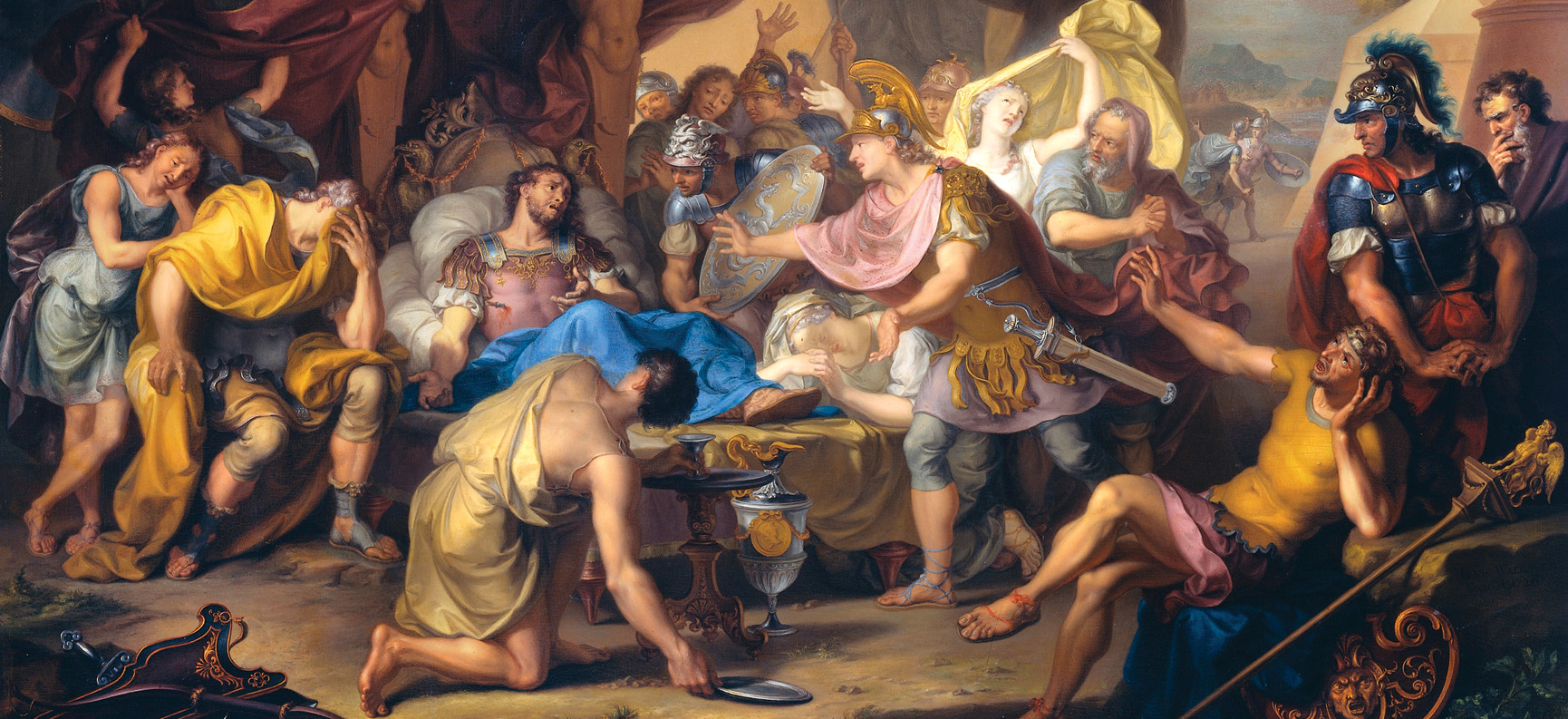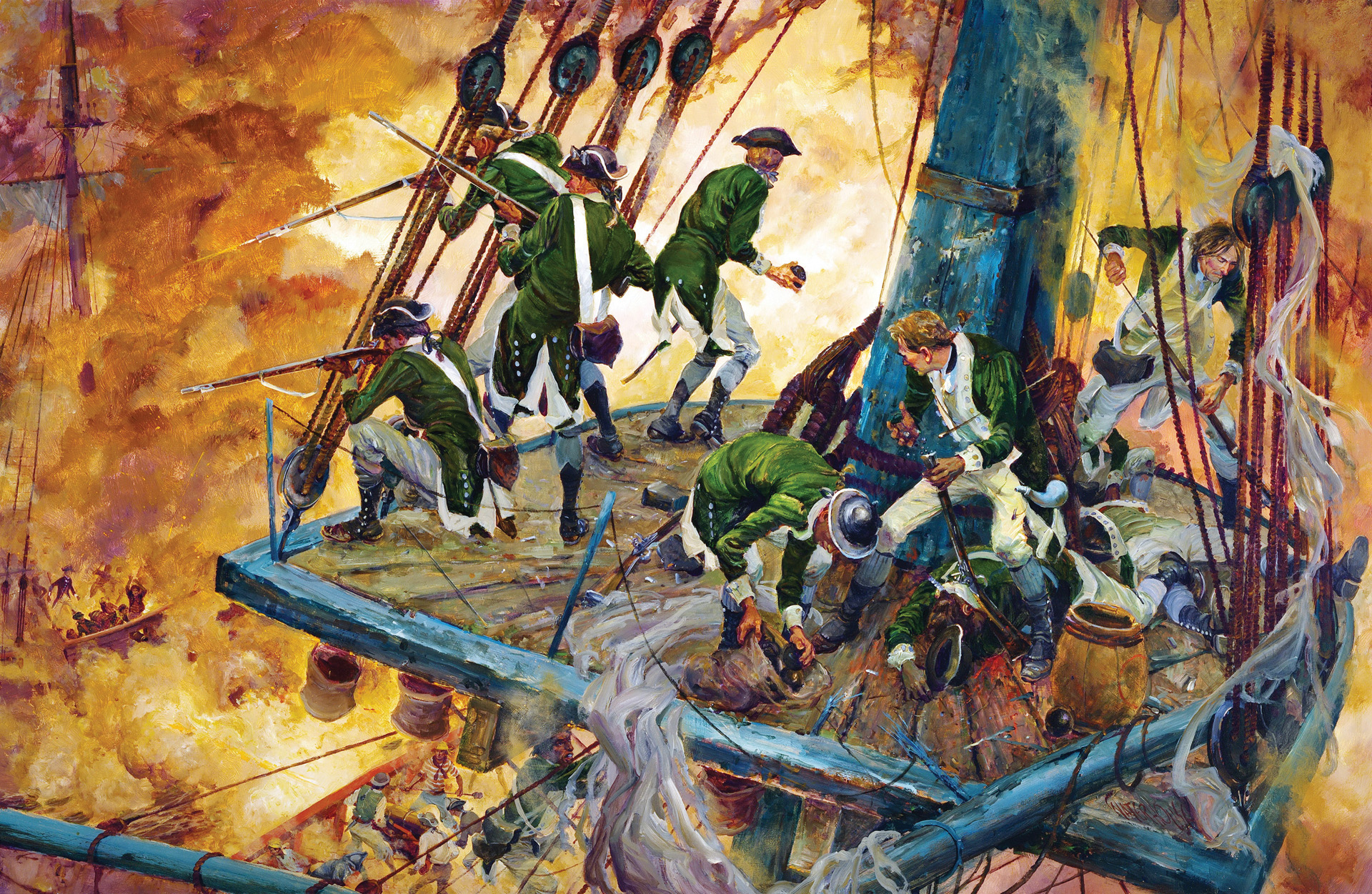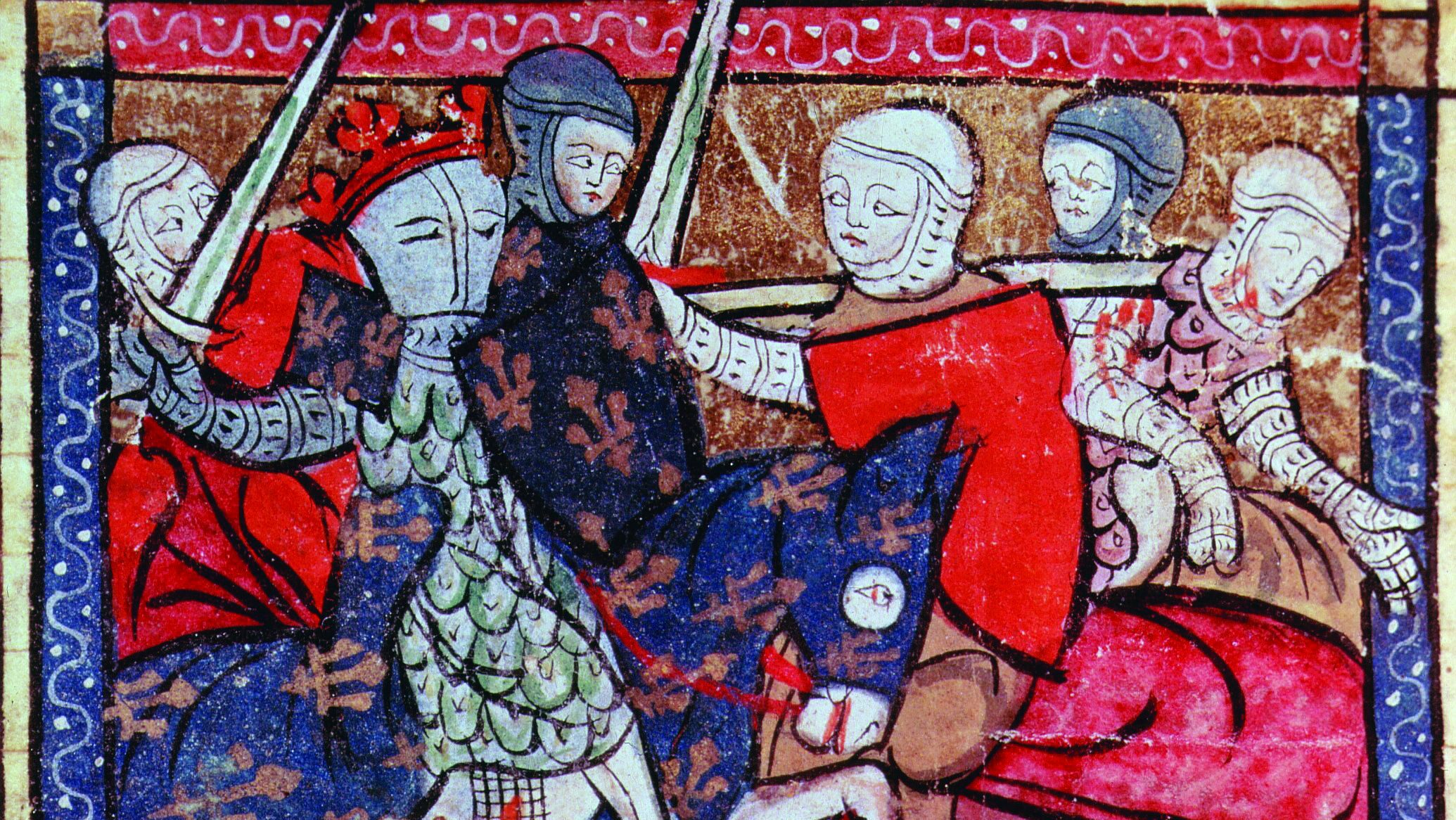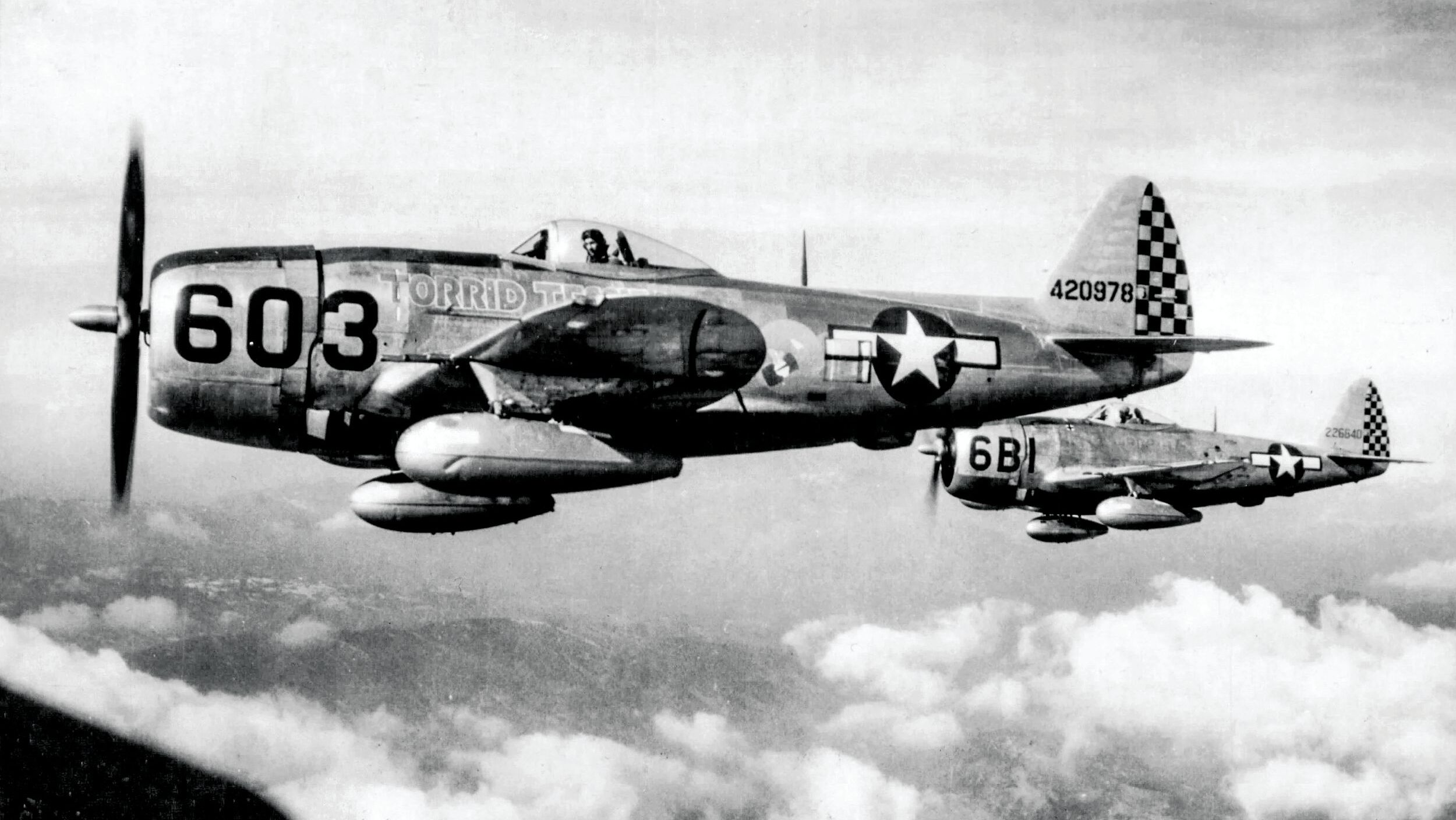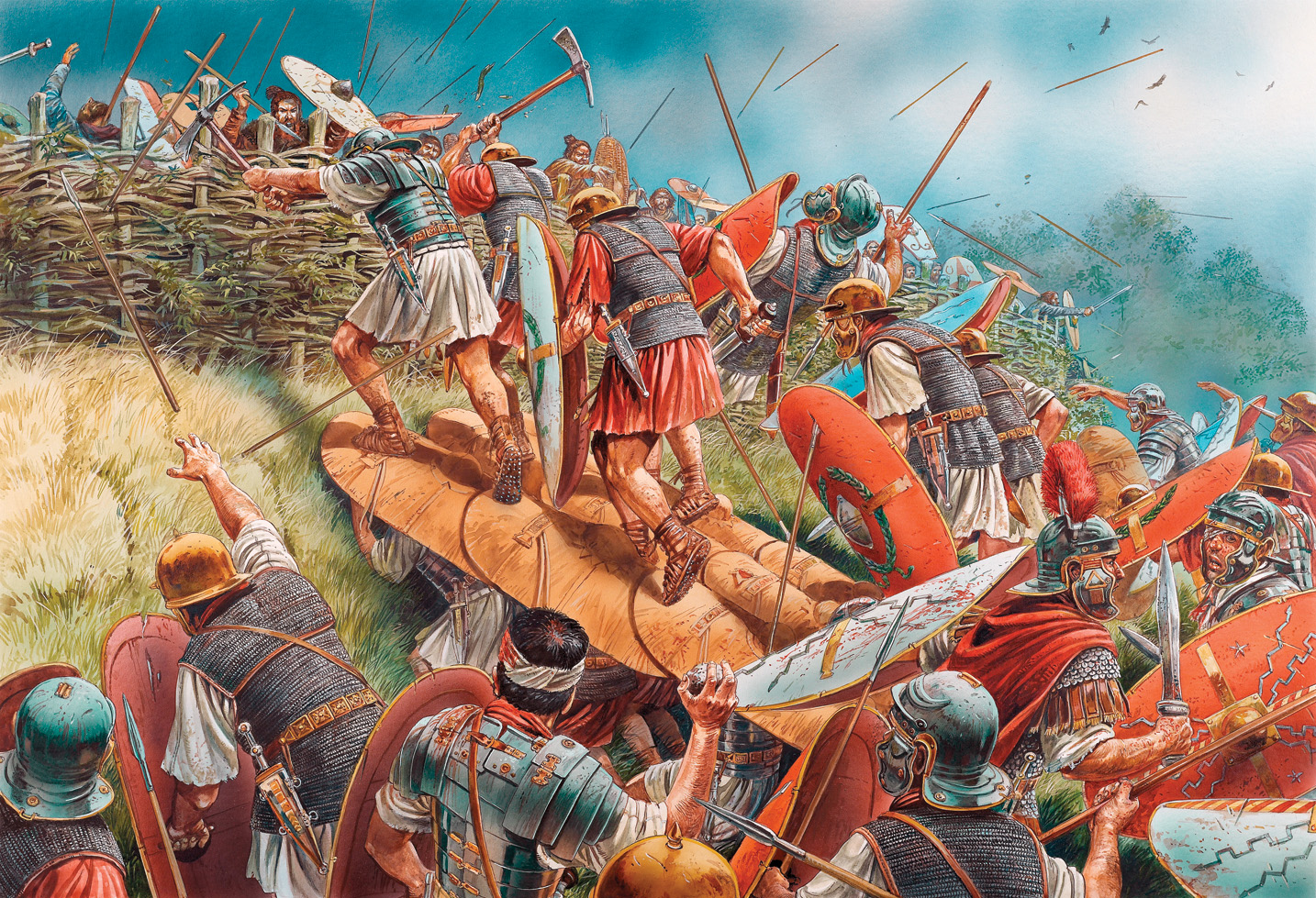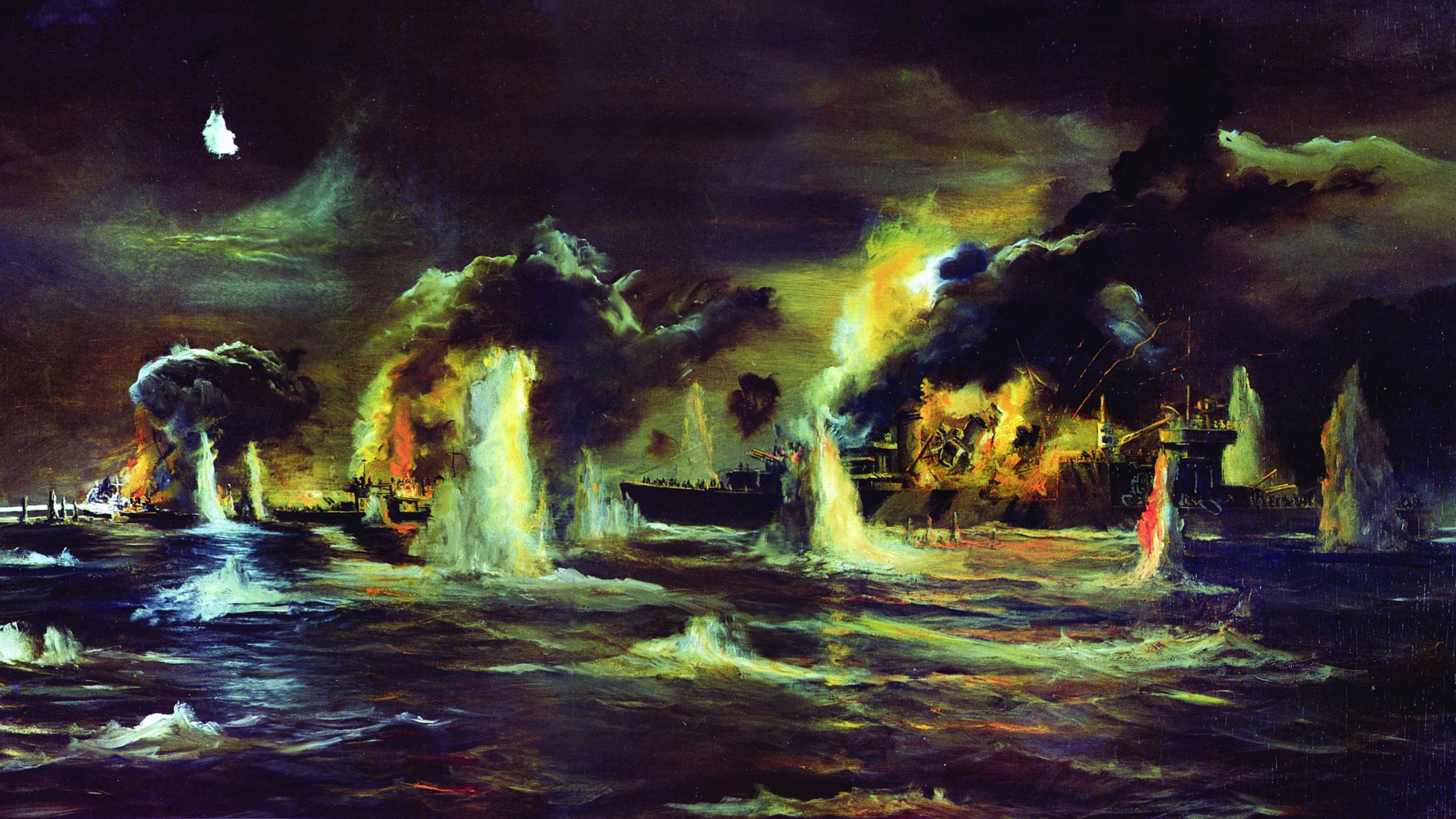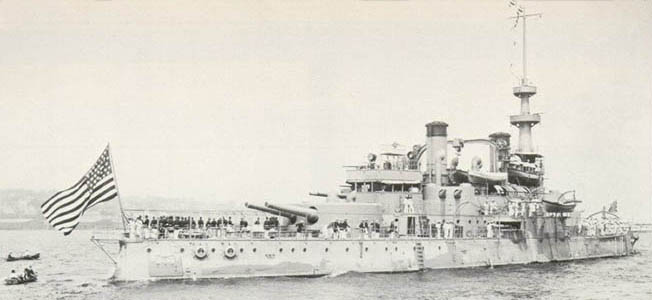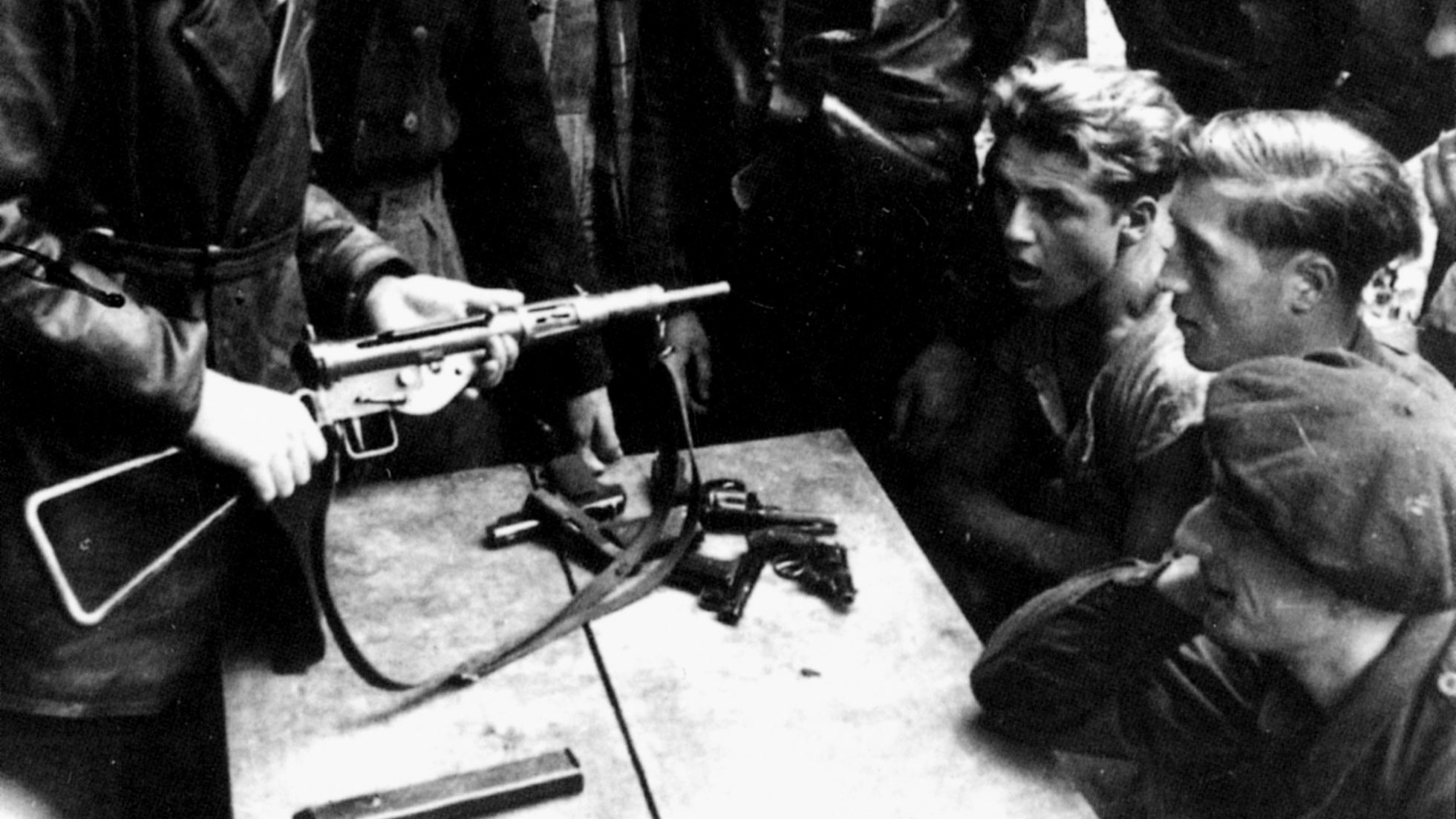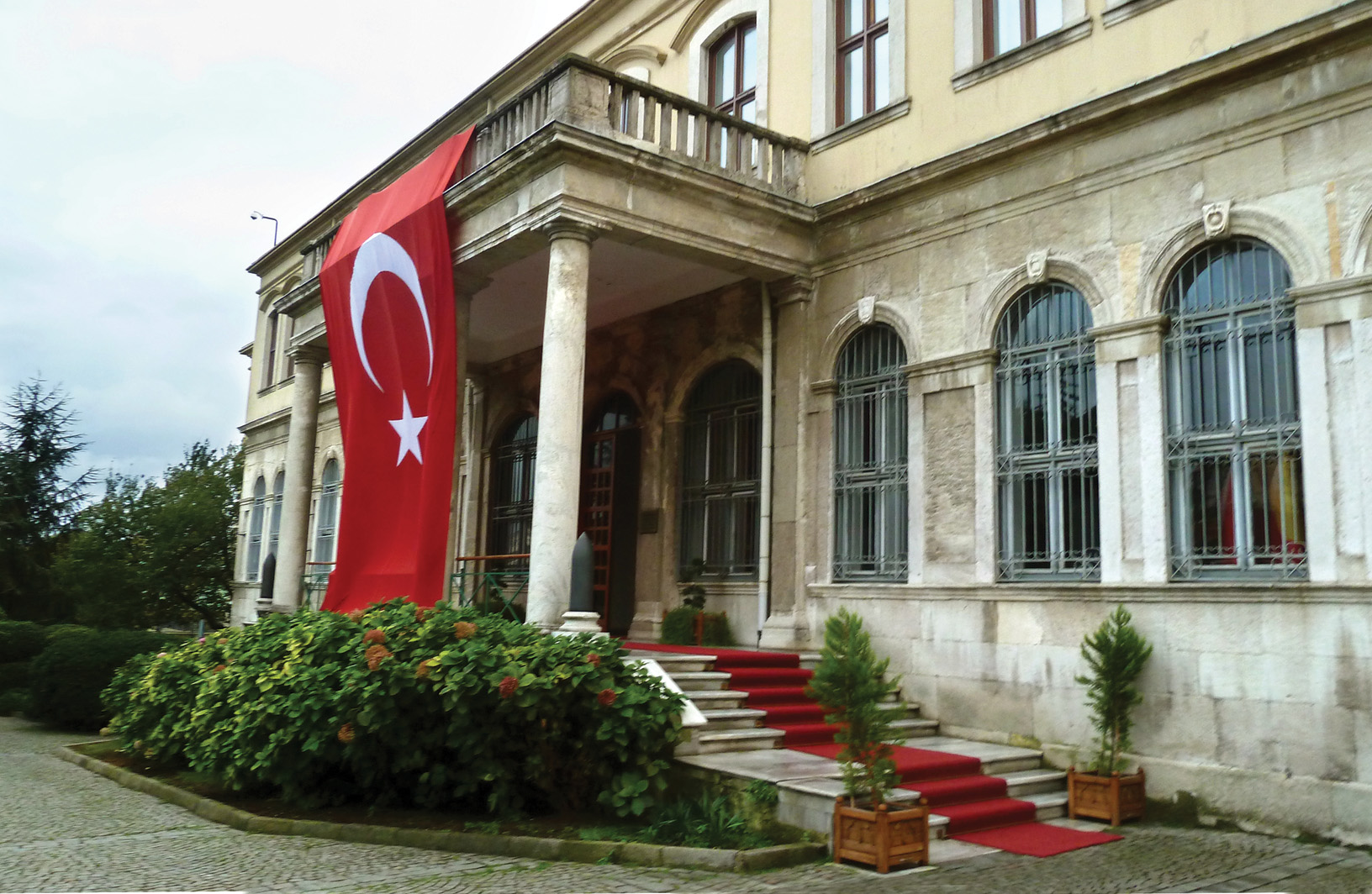By Tim Miller
Astounding news swept through Greece in the summer of 371 bc. In Boeotia, a crossroads for armies that was usually littered with the dead of its own citizens, the invading Spartans had been beaten, and one of their two kings had been slain in battle. The Boeotian victory at Leuctra on July 6, 371 bc, would change the balance of power throughout Greece. Over the course of the previous century Boeotia had been forced to choose sides in the conflicts that engulfed Greece. The Boeotians had sided with the invading Persians during the Second Persian Invasion of Greece in 480 bc, then with Sparta against Athens, and after that with Athens against Sparta. Even though the Boeotians’ victory over the Spartans at the Battle of Leuctra made enemies of both Sparta and Athens, the Boeotians could claim to have truly liberated themselves.
Despite decades in the shadow of the all-powerful Spartans, the rural people of Boeotia had finally managed to free themselves from the local ruling class and oligarchs. Indeed, Boeotia had extended voting rights, office holding, and military service to all of its people, including even the poorest farmers. This expansion of citizenship substantially increased the pool of potential recruits and therefore was a crucial factor in the Boeotians’ subsequent military success. Momentous change in Boeotia occurred when philosophers became rulers in Thebes, according to contemporary historians.
Chief among these rulers was Epaminondas, who along with Pelopidas had led the Thebans to victory at Leuctra. Following the repulse of the Spartan cavalry charge, Epaminondas had gone against the prevailing tactics of the time. The visionary commander had not only massed his own hoplites an astounding 50 deep but also attacked the Spartan left rather than its right. The right contained the mass of Spartan army, as well as those allied soldiers Sparta had forced to fight with them. But Epaminondas knew that by attacking the Spartan left, which potentially would wipe out the elite soldiers of their army, he also would be destroying the morale of the highly regimented Spartans.
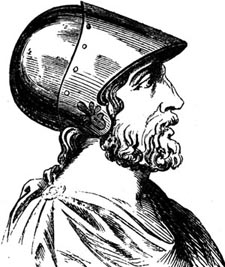
The man who was later called princips Graeciae (first man of Greece) probably was born on or about 410bc, in the city of Thebes. For all the blank spots in his early life, the one shining certainty is his devotion to the philosophy and religion of Pythagoras. Pythagoras preached a variety of doctrines the everyday Greek would have found strange and, in some cases, even offensive. The sect’s belief in reincarnation, which included the possibility of being reborn as an animal, informed not only his followers’ strict vegetarianism, but also removed them from the norm of Greek sacrificial religion. Although a host of supernatural abilities, scientific discoveries, and plain folklore were later attached to Pythagoras, it is telling that he led his sect from the Aegean island of Samos all the way to Croton, where they lived in isolation.
Epaminondas refused to believe in the good or bad omens that usually trailed and even justified ancient military campaigns, yet he was smart enough to hint at them as an expedient, given that many of his soldiers would have seen such oracles as a standard of military life. The love of mathematical proportion and harmony that Pythagoras had preached, in which he equated human beings with numbers and musical notes, also allowed Epaminondas to despise the Spartan state even more than he already did, since to him their capital city was a mere disordered maze of streets.
He also treated his allies and enemies in unexpected ways. Fellow Boeotians who had disagreed with his policies or fought on the other side were forgiven, even as the usual penalty for such behavior would have been death. And when he reached Sparta and freed the Helots and founded Messene, his army did not seek to root out Spartan allies who had helped keep the Helots under subjugation. To use modern terminology, there were no witch hunts, no ethnic cleansing. Even as Xenophon records the Helot desire “to eat them raw,” such treatment of the Spartans does not seem to have occurred. Never one to avoid the chance for describing brutality and violence, the ancient sources are silent on such actions when it comes to Epaminondas and his army’s march into the Spartan heartland in the Peloponnese following their victory at Leuctra. It is worth noting that the force that crushed a tyrannical and oppressive regime did not itself resort to tyranny or oppression in the wake of its decisive victory.
As opposed to those ancient generals whose horses even came to fame, Epaminondas did not ride one; instead, he marched on foot with his men. What is more, he had no qualms about becoming a regular hoplite again, when for a moment his generalship was taken from him. While he was later dubbed “Iron Gut” thanks to the meager rations he demanded his soldiers live on, there is no question he lived on the same amount, or less. Also worth nothing, when Epaminondas marched into Laconia at the head of a huge allied army, they included mostly Boeotian farmers and voluntary allies as opposed to mercenaries or conquered allies.
Fresh off their victory at Leuctra, the Boeotians actually capped it in the most bloodless way; they freed Messenian and Laconian Helots, who by then had been the Spartans’ slaves for more than 200 years. Only in Sparta was slavery as an institution specifically set aside for the subjugation of one people only. Incredibly, during the lifetime of Epaminondas, the slaves may have outnumbered the Spartans by as much as 20 to one, a situation that made Sparta’s military capability less a well-earned achievement than a paranoid necessity that required year-round training and an emphasis on physical prowess. Corinthian philosopher Timolaus had said that the only way to destroy the Spartans was by applying “fire to them while they were in their nests.” The Boeotians did just that.
In the wake of their victory at Leuctra, other states followed the Boeotians into some form of democracy, including former Spartans on the Peloponnese. Meanwhile, Boeotian hoplites had rarely fought outside their own country, this while no one within the historical record had ever invaded Spartan territory; Laconia was referred to as aporthetos,or unplundered. But to everyone’s surprise, the Boeotian farmers were not just going to do it, and march 200 miles while gathering allies and supplies as they went, but they were going to do it in the winter when there was no possibility of foraging off the countryside. They brought with them baggage trains of dried food, fish, and fruit. When they saw that the locals fled with their approach, the Boeotians hoped that they would have access to the recently harvested grain of the Peloponnese.
At the news of such a plan, Epaminondas and his fellow general Pelopidas were given command of the army. Those who refused to assist Epaminondas also saw that opposing the recently minted war hero was unlikely to succeed; they had already kept him from pursuing the fleeing Spartans after Leuctra, and upon hearing of his winter plans they perhaps wished they had given in on that count. After leaving a small garrison behind, the two generals began their march in December 371 bc with 7,000 Boeotian hoplites. As they marched they were joined by Thessalians, Arcadians, Phocians, Locrians, and Euoboeans. Each of these contingents contributed a baggage train and servants.
Passing through the Isthmus of Corinth, the collected troops pillaged the countryside as they entered the Peloponnese and marched south through Arcadia. They made as many as 15 miles a day through rough terrain and in the worst of winter conditions. Their line of march, especially over narrow mountain roads, stretched for 25 miles. The need for such a campaign in winter at the end of a major military campaign must have become apparent to those who realized that, although the Spartan army was nowhere to be seen, Epaminondas and Pelopidas continued their relentless advance.
W
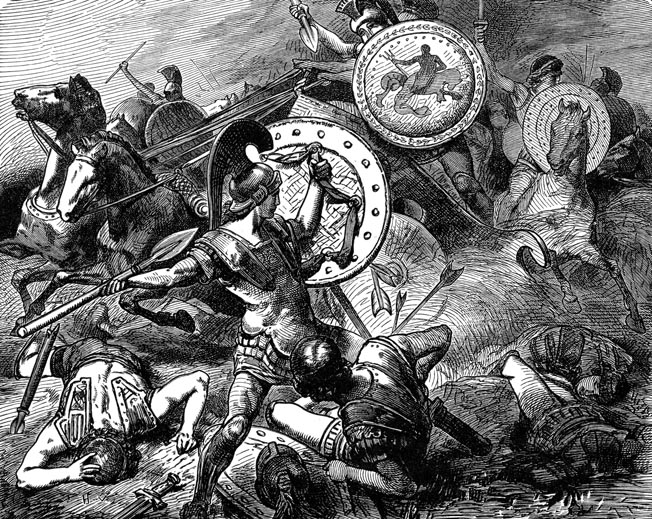
Their tenure as Boeotarchs (chief officers of the Boeotian Confederacy) and hence as generals was legally at an end once the year 370 began. Technically speaking, they had no right to lead the army for they already had made their point by supporting democracy on the Peloponnese and, therefore, should have returned home.
But Epaminondas was determined to push the bounds of democracy. He would stop at nothing to disrupt the designs of tyrants. He continued south into the Peloponnese, freeing and gathering Helots with him as he progressed.
The Boeotian army skirted the city of Sparta entirely, where the remainder of the Spartan army was holed up. This time it was Sparta’s turn to experience what it felt like to defend one’s city in the face of a superior foe. Desperate as they were, the Spartans briefly agreed to free and arm some 6,000 Helots, but their presence in the city was almost as unnerving as that of the Boeotians passing by outside of it, and the offer was revoked.
Epaminondas himself had no desire for a siege or to fight in Sparta’s chaos of streets; instead, he led his army south to the port of Gythium on the southern shore of the Peloponnese. The Boeotians destroyed the port and all other walled towns they encountered. Afterward, Epaminondas returned north to Attica, where many of his allies decided to return home after having collected their share of loot and spoils. Perhaps considering this option himself, he suddenly fell sway to an oracle, which the ancient sources stress he rarely did. Diodorus tells us that Epaminondas “meant to seek after great enterprises and to seek everlasting renown.” It just so happened that an oracle made it clear that such success depended upon restoring “to Messenians their ancestral land.”
They had not freed all of the Helots, and Epaminondas returned to Laconia once again to finish the job. Twenty miles west and a little north of Sparta, and within the shadow of Mount Thome, Epaminondas spent the waning days of the winter of 370 bc helping the local population haul the stones for their new capital, Messene, and its new walls.
True to his Pythagorean leanings, he had his lead architect lay the new city out in a grid. Despite more famous cities in antiquity, the remains of Messene’s fortifications are still among the most impressive in ancient Greece. Twenty-five miles to the northeast, Epaminondas ordered the construction of another fortified city. This one, which was named Megalopolis, became a thriving urban center.
The Spartans later attempted to attack Messene but decided against it upon seeing that they were all willing to fight to the death rather than return to slavery. Although the Spartans remained strong enough to harass people within and without the Peloponnese, they never did recover from the Boeotian invasion or from the founding of two formidable cities so near their own. Thus Epaminondas succeeded in his quest to create new cities that could serve as political and military counterweights to Sparta.
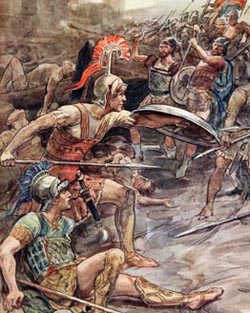
It should come as no surprise that Epaminondas’s individual daring in the name of democracy made him no friends when he finally did return home. His favorite dog wagged his tail, while “the Thebans in contrast for all that I have done for them try to execute me,” he quipped. Willing to accept execution for the actions of his that had been illegal, all charges were suddenly dropped when he asked that his tombstone read: “Epaminondas had forced the Thebans against their will to torch Laconia, which had been heretofore untouched for 500 years; he resettled Messene after two hundred and thirty years; he had united and organized the Arcadians into a league; and he gave back to the Greeks their autonomy.”
While not executed, at one point he was demoted to a regular soldier. The “Theban Hegemony” also faded quickly, for the Thebans had overextended themselves and eventually devolved into civil war. Meanwhile, Epaminondas’s former allies soon turned against him. Unwilling as ever to execute or harshly treat those who opposed him, he made his own downfall an inevitability. The world, as it were, was not ready for what he had to offer, and after such a titanic victory over the Spartans, overloaded symbolically and literally with so much history and meaning, the day-to-day politics of bickering and reversals proved not to be one of Epaminondas’s strengths.
At the Second Battle of Mantinea fought on July 4, 362 bc, Epaminondas relied again on his Leuctra tactic with similar positive results. His phalanx drove the Spartans and their allies from the field. Mortally wounded by a spear, Epaminondas was carried gently from the field. He suggested to those tending to him that they sue for peace for he knew that there wasn’t another leader like him among their ranks. When the Boeotians crowding around him declared victory, he is believed to have said, “I have lived long enough, for I die unconquered.”
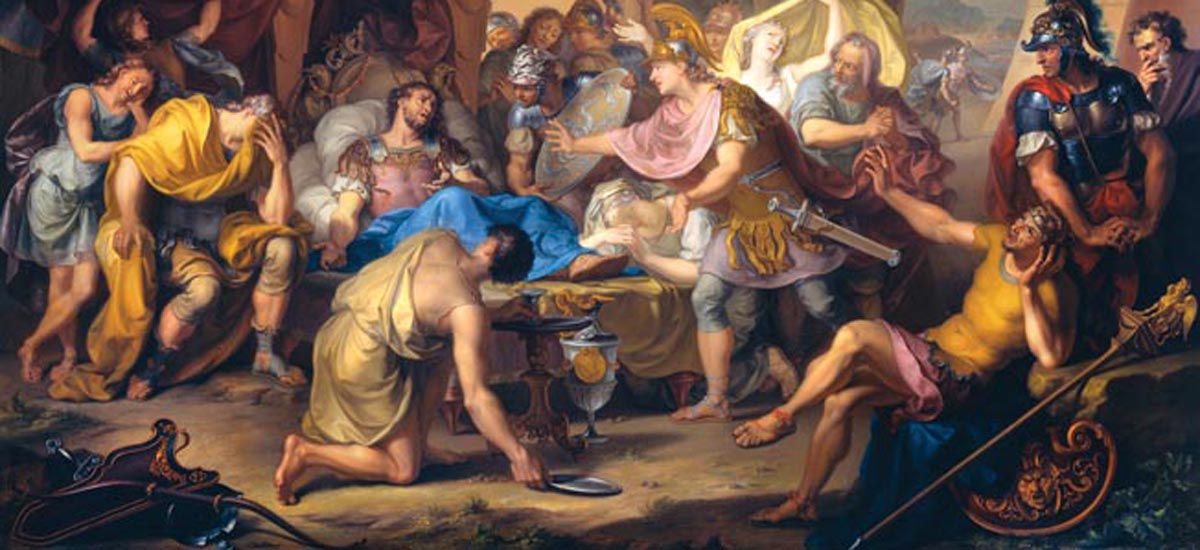
Epaminondas’s primary contributions to military science were mass and economy of force. The former refers to applying a preponderance of force at a decisive place and time during battle. The latter refers to using all available combat power in an effective manner. At Leuctra, Epaminondas employed a massed phalanx and what amounted to a refused flank in the sense that he allowed the allied forces that constituted his right wing to follow deep phalanx in echelon as it attacked the enemy’s left wing. These fundamental principles became building blocks for the military geniuses of future generations.
As a general with a conscience who had the ability to anticipate problems, Epaminondas was concerned with the ramifications of his campaign against Sparta. He feared that by grinding the Spartans into the dust he would be paving the way for the rise of Athens or Macedon. His worst fears in that regard would come true.
The future king Philip II of Macedon, while a young man, was held as a hostage in Illyria and then in Thebes for three years. While in Thebes he stayed in the house of the famous Theban general Pammenes. In that setting, young Philip learned much about the art of war.
The Macedonian king and his son Alexander both took what inspiration and lessons they could from Epaminondas’s life and military career. They adapted it to greater brutality. When the Thebans rebelled against Macedon, Alexander destroyed the city and parceled out its territory to the other Boeotian cities.
More than 600 years later, the historian Pausanias recorded the following inscription dedicated to Epaminondas: “This came from my council: Sparta has cut the hair of her glory, Messene takes her children in, a wreath of the spears of Thebes has crowned Megalopolis. Greece is free.”
